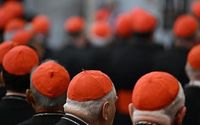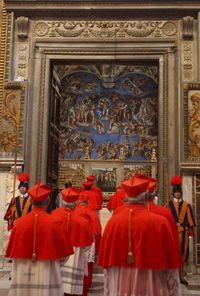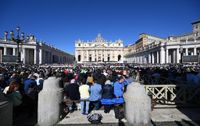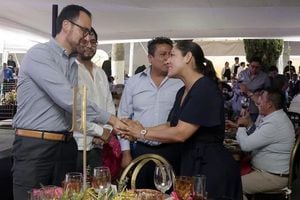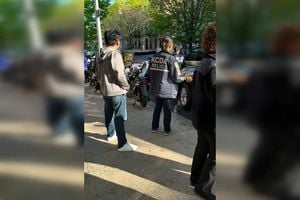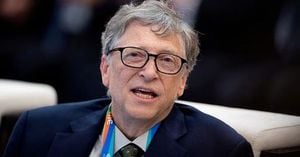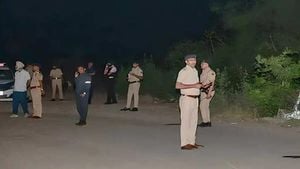On Wednesday, May 7, 2025, the 76th Conclave for the election of a new Pope officially begins in the Sistine Chapel, following the death of Pope Francis on April 21, 2025. A total of 133 cardinal electors will gather to participate in this solemn and historic event, adhering to strict protocols and traditions that have been established over centuries.
The Conclave, governed by the apostolic constitution Ubi Periculum and modified by subsequent popes, is a deeply symbolic process that reflects the rich history of the Catholic Church. Cardinal electors, all under the age of 80 at the start of the sede vacante, will cast their votes to select the successor of Saint Peter. Although there are 135 cardinals eligible to vote, two, Cardinal Antonio Cañizares Llovera of Spain and Cardinal John Njue of Kenya, will not attend due to health issues.
The required quorum for electing a new Pope is two-thirds of the votes, meaning at least 89 votes are necessary for a successful election. The cardinal electors will reside in the Domus Sanctae Marthae within the Vatican, where they will remain in isolation, prohibited from using any form of communication with the outside world. This isolation is enforced through advanced technologies, including signal jammers and anti-drone systems, ensuring that the voting process remains confidential.
On May 5, 2025, all Conclave staff took an oath of perpetual secrecy, a measure that underscores the seriousness of the proceedings. The Conclave officially begins after the Novendiali, a nine-day mourning period following Pope Francis's funeral. This period is marked by reflection and prayer, setting the tone for the important decisions that lie ahead.
As the day unfolds, all cardinals will gather for a Mass at 10 AM, presided over by Cardinal Giovanni Battista Re. This Mass serves as a moment for the Church to invoke the Holy Spirit for guidance in the selection of the new Pontiff. Following the Mass, at approximately 4:30 PM, the cardinal electors will enter the Sistine Chapel in procession, dressed in their liturgical attire while singing the litanies of the saints. The entrance will be solemn, marked by the traditional hymn Veni Creator Spiritus.
After the cardinal electors have taken their oaths, the phrase "Extra Omnes" will be proclaimed, signaling that all non-electors must leave the chapel. From that moment, the Conclave is officially underway, and the cardinal electors will remain in total isolation until a new Pope is elected.
Each voting session will require the cardinals to write the Latin formula "Eligo in Summum Pontificem" followed by the name of their chosen candidate on a ballot. These ballots will be collected and burned, with the resulting smoke from the chimney of the Sistine Chapel indicating the outcome of the vote. A black smoke signal means no agreement has been reached, while white smoke signifies that a new Pope has been elected.
The Conclave will commence with a symbolic vote on the afternoon of May 7, 2025. In the following days, the cardinal electors will engage in up to four voting sessions each day, with two votes in the morning and two in the afternoon. If no consensus is reached after three full days, there will be a day of pause for prayer and reflection.
Should the voting extend beyond the 33rd or 34th ballot, the process will shift to a runoff between the two candidates with the highest votes. Even in this scenario, a two-thirds majority is still required for election. Once a candidate achieves the necessary votes, he will be asked if he accepts the position and what name he intends to take as Pope.
After accepting, the newly elected Pope will retire to the "Stanza delle Lacrime" to don the papal vestments. Following this, the cardinal protodeacon, Dominique Mamberti, will announce the election to the world with the famous phrase "Habemus Papam." The new Pope will then appear on the central balcony of St. Peter's Basilica to deliver his first blessing, known as the "Urbi et Orbi." If elected, the Pope is expected to make his first public appearance for the Angelus on Sunday, May 12, 2025.
This Conclave is notable not only for the historic context but also for the number of cardinal electors involved. With 135 eligible cardinals, this Conclave marks a significant increase compared to past elections, such as the 62 electors in 1903 when Pope Pius X was elected. The electors represent a global Church, with 59 from Europe, 37 from the Americas, 20 from Asia, 16 from Africa, and 3 from Oceania. Among the electors, 34 belong to various religious orders, reflecting the diverse backgrounds of the Church's leadership.
The youngest cardinal elector is Mykola Bychok from Ukraine, born in 1980, while the oldest is Carlos Osoro Sierra, the 79-year-old archbishop emeritus of Madrid. This generational diversity within the electors adds a rich dynamic to the election process.
Historically, the Conclave has experienced a wide range of durations, from the shortest lasting only 10 hours in 1503 to the longest lasting an astonishing 18 months from March 1271 to September 1272. The Sistine Chapel has been the site of the Conclave since 1492, providing a fitting backdrop for such a pivotal moment in the Catholic Church's history.
As the world watches, the solemnity and mystery of the Conclave will unfold, with the hopes and prayers of millions resting on the shoulders of the cardinal electors as they embark on this sacred duty to elect the next leader of the Catholic Church.
